Pakistan Rupee on:
[Wikipedia]
[Google]
[Amazon]
The Pakistani rupee ( ur, /

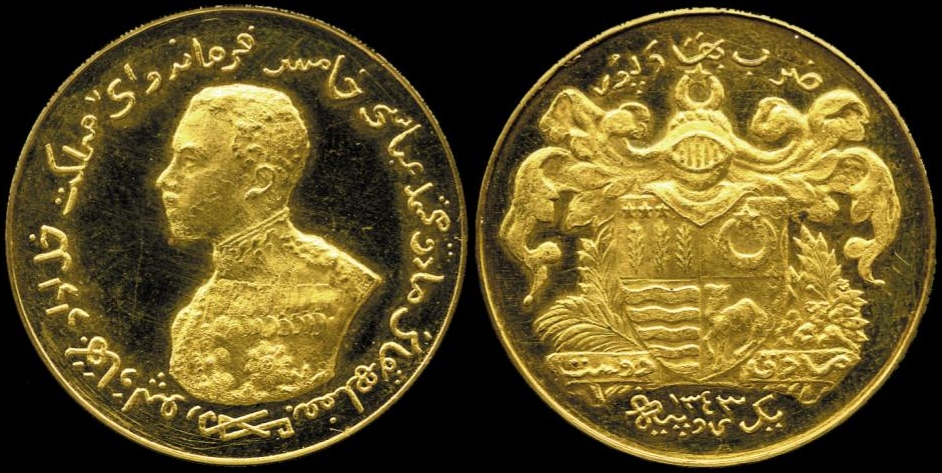
 The word ''rūpiya'' is derived from the
The word ''rūpiya'' is derived from the
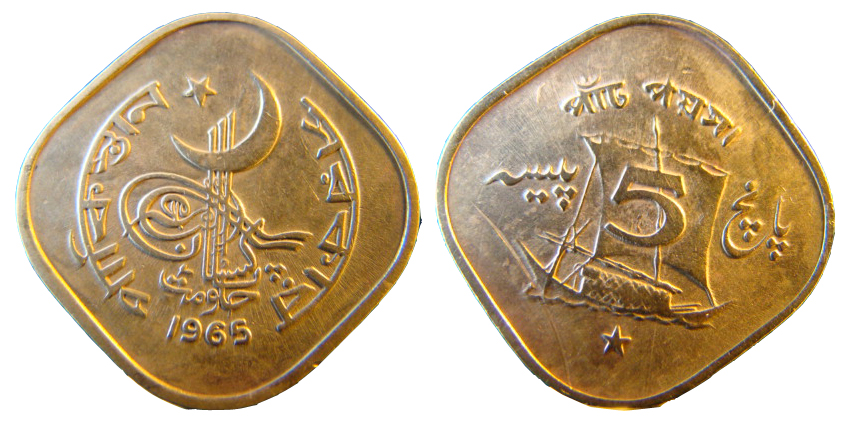
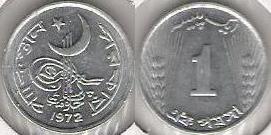


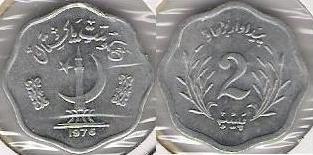


 In 1948, coins were introduced in denominations of 1 pice, , 1 and 2 annas, , and 1 rupee. 1 pie coins were added in 1951. In 1961, coins for 1, 5 and 10 pice were issued, followed later the same year by 1 paisa, 5 and 10 paise coins. In 1963, 10 and 25 paise coins were introduced, followed by 2 paise the next year. Re. 1/- coins were reintroduced in 1979, followed by Rs. 2/- in 1998 and Rs. 5/- in 2002. 2 paise coins were last minted in 1976, with 1 paisa coins ceasing production in 1979. The 5, 10, 25 and 50 paise all ceased production in 1996. There are two variations of Rs. 2/- coins: most have clouds above the Badshahi Masjid but many do not. The Re. 1/- and Rs. 2/- coins were changed to aluminium in 2007.
Paisa denominated coins ceased to be legal tender in 2013, leaving the Re. 1/- coin as the minimum legal tender. On 15 October 2015, the Pakistan government introduced a revised Rs. 5/- coin with a reduced size and weight and having a golden colour, made from a composition of copper-nickel-zinc, and also in 2016 a Rs. 10/- coin was introduced into circulation.
In 2019 the Pakistan government introduced a commemorative Rs. 50/- coin to celebrate the 550th birthday of Sri Gru Nanak Dev Ji and in tribute of opening of new Gurdwara of Kartarpur Pakistan.
In 1948, coins were introduced in denominations of 1 pice, , 1 and 2 annas, , and 1 rupee. 1 pie coins were added in 1951. In 1961, coins for 1, 5 and 10 pice were issued, followed later the same year by 1 paisa, 5 and 10 paise coins. In 1963, 10 and 25 paise coins were introduced, followed by 2 paise the next year. Re. 1/- coins were reintroduced in 1979, followed by Rs. 2/- in 1998 and Rs. 5/- in 2002. 2 paise coins were last minted in 1976, with 1 paisa coins ceasing production in 1979. The 5, 10, 25 and 50 paise all ceased production in 1996. There are two variations of Rs. 2/- coins: most have clouds above the Badshahi Masjid but many do not. The Re. 1/- and Rs. 2/- coins were changed to aluminium in 2007.
Paisa denominated coins ceased to be legal tender in 2013, leaving the Re. 1/- coin as the minimum legal tender. On 15 October 2015, the Pakistan government introduced a revised Rs. 5/- coin with a reduced size and weight and having a golden colour, made from a composition of copper-nickel-zinc, and also in 2016 a Rs. 10/- coin was introduced into circulation.
In 2019 the Pakistan government introduced a commemorative Rs. 50/- coin to celebrate the 550th birthday of Sri Gru Nanak Dev Ji and in tribute of opening of new Gurdwara of Kartarpur Pakistan.
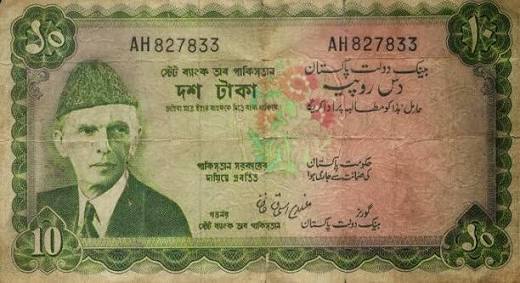 Regular government issues commenced in 1948 in denominations of Re. 1/-, Rs. 5/-, Rs. 10/- and Rs. 100/-. The government continued to issue Re. 1 notes until the 1980s but another note-issuing was taken over by the
Regular government issues commenced in 1948 in denominations of Re. 1/-, Rs. 5/-, Rs. 10/- and Rs. 100/-. The government continued to issue Re. 1 notes until the 1980s but another note-issuing was taken over by the
ALA-LC
ALA-LC (American Library AssociationLibrary of Congress) is a set of standards for romanization, the representation of text in other writing systems using the Latin script.
Applications
The system is used to represent bibliographic information by ...
: ; sign
A sign is an object, quality, event, or entity whose presence or occurrence indicates the probable presence or occurrence of something else. A natural sign bears a causal relation to its object—for instance, thunder is a sign of storm, or ...
: Re (singular) and Rs (plural); ISO code: PKR) is the official currency
A currency, "in circulation", from la, currens, -entis, literally meaning "running" or "traversing" is a standardization of money in any form, in use or circulation as a medium of exchange, for example banknotes and coins.
A more general ...
of Pakistan
Pakistan ( ur, ), officially the Islamic Republic of Pakistan ( ur, , label=none), is a country in South Asia. It is the world's List of countries and dependencies by population, fifth-most populous country, with a population of almost 24 ...
since 1948. The coins and notes are issued and controlled by the central bank
A central bank, reserve bank, or monetary authority is an institution that manages the currency and monetary policy of a country or monetary union,
and oversees their commercial banking system. In contrast to a commercial bank, a centra ...
, namely State Bank of Pakistan
The State Bank of Pakistan (SBP) ( ur, ) is the Central Bank of Pakistan. Its Constitution, as originally laid down in the State Bank of Pakistan Order 1948, remained basically unchanged until 1 January 1974, when the bank was Nationalized and ...
.
In Pakistani English
Pakistani English (also known as Paklish or Pinglish) is the group of English language varieties spoken and written in Pakistan. It was first so recognised and designated in the 1970s and 1980s. Pakistani English (PE), similar and related to ...
, large values of rupees are counted in thousands; lakh
A lakh (; abbreviated L; sometimes written lac) is a unit in the Indian numbering system equal to one hundred thousand (100,000; scientific notation: 105). In the Indian 2,2,3 convention of digit grouping, it is written as 1,00,000. For e ...
(100,000); crore
A crore (; abbreviated cr) denotes ten million (10,000,000 or 107 in scientific notation) and is equal to 100 lakh in the Indian numbering system. It is written as 1,00,00,000 with the local 2,2,3 style of digit group separators (one lakh is eq ...
(ten-millions); Arab
The Arabs (singular: Arab; singular ar, عَرَبِيٌّ, DIN 31635: , , plural ar, عَرَب, DIN 31635: , Arabic pronunciation: ), also known as the Arab people, are an ethnic group mainly inhabiting the Arab world in Western Asia, ...
(billions); kharab (100 billion). Numbers are still grouped in thousands (123,456,789 rather than 12,34,56,789 as written in India)
History


 The word ''rūpiya'' is derived from the
The word ''rūpiya'' is derived from the Sanskrit
Sanskrit (; attributively , ; nominally , , ) is a classical language belonging to the Indo-Aryan languages, Indo-Aryan branch of the Indo-European languages. It arose in South Asia after its predecessor languages had Trans-cultural diffusion ...
word ''rūpya'', which means "wrought silver, a coin of silver", in origin an adjective meaning "shapely", with a more specific meaning of "stamped, impressed", whence "coin". It is` derived from the noun ''rūpa
Rūpa () means "form". As it relates to any kind of basic object, it has more specific meanings in the context of Indic religions.
Definition
According to the Monier-Williams Dictionary (2006), rūpa is defined as:
:* ... any outward appearance ...
'' "shape, likeness, image". ''Rūpaya'' was used to denote the coin introduced by Sher Shah Suri
Sher Shah Suri ( ps, شیرشاه سوری)
(1472, or 1486 – 22 May 1545), born Farīd Khān ( ps, فرید خان)
, was the founder of the Sur Empire in India, with its capital in Sasaram in modern-day Bihar. He standardized the silver coin ...
during his reign from 1540 to 1545 CE.
The Pakistani rupee was put into circulation in Pakistan after the dissolution of the British Raj in 1947. Initially, Pakistan used British Indian
British Indians are citizens of the United Kingdom (UK) whose ancestral roots are from India. This includes people born in the UK who are of Indian origin as well as Indians who have migrated to the UK. Today, Indians comprise about 1.4 mil ...
coins and notes simply over-stamped with "Pakistan". New coins and banknotes were issued in 1948. Like the Indian rupee
The Indian rupee ( symbol: ₹; code: INR) is the official currency in the republic of India. The rupee is subdivided into 100 '' paise'' (singular: ''paisa''), though as of 2022, coins of denomination of 1 rupee are the lowest value in use ...
, it was originally divided into 16 ''annas'', each of 4 ''pice'' or 12 ''pie''. The currency was decimalised on 1 January 1961, with the rupee subdivided into 100 pice, renamed (in English) paise
Paisa (also transliterated as ''pice'', ''pesa'', ''poysha'', ''poisha'' and ''baisa'') is a monetary unit in several countries. The word is also a generalised idiom for money and wealth. In India, Nepal, and Pakistan, the ''Paisa'' currently equa ...
(singular paisa
Paisa (also transliterated as ''pice'', ''pesa'', ''poysha'', ''poisha'' and ''baisa'') is a monetary unit in several countries. The word is also a generalised idiom for money and wealth. In India, Nepal, and Pakistan, the ''Paisa'' currently equa ...
) later the same year. However, coins denominated in paise have not been issued since 1994.
Coins



Banknotes
On 1 April 1948, provisional notes were issued by theReserve Bank of India
The Reserve Bank of India, chiefly known as RBI, is India's central bank and regulatory body responsible for regulation of the Indian banking system. It is under the ownership of Ministry of Finance, Government of India. It is responsible f ...
and the Government of India
The Government of India ( ISO: ; often abbreviated as GoI), known as the Union Government or Central Government but often simply as the Centre, is the national government of the Republic of India, a federal democracy located in South Asia, ...
on behalf of the Government of Pakistan
The Government of Pakistan ( ur, , translit=hakúmat-e pákistán) abbreviated as GoP, is a federal government established by the Constitution of Pakistan as a constituted governing authority of the four provinces, two autonomous territorie ...
, for use exclusively within Pakistan, without the possibility of redemption in India. Printed by the India Security Press in Nasik, these notes consist of Indian note plates engraved (not overprinted) with the words GOVERNMENT OF PAKISTAN in English and "Hukumat-e-PAKISTAN" in Urdu added at the top and bottom, respectively, of the watermark area on the front only; the signatures on these notes remain those of Indian banking and finance officials.
 Regular government issues commenced in 1948 in denominations of Re. 1/-, Rs. 5/-, Rs. 10/- and Rs. 100/-. The government continued to issue Re. 1 notes until the 1980s but another note-issuing was taken over by the
Regular government issues commenced in 1948 in denominations of Re. 1/-, Rs. 5/-, Rs. 10/- and Rs. 100/-. The government continued to issue Re. 1 notes until the 1980s but another note-issuing was taken over by the State Bank of Pakistan
The State Bank of Pakistan (SBP) ( ur, ) is the Central Bank of Pakistan. Its Constitution, as originally laid down in the State Bank of Pakistan Order 1948, remained basically unchanged until 1 January 1974, when the bank was Nationalized and ...
in 1953 when Rs. 2/-, Rs. 5/-, Rs. 10/- and Rs. 100/- notes were issued. Only a few Rs. 2/- notes were issued. Rs. 50/- notes were added in 1957, with Rs. 2/- notes reintroduced in 1985. In 1986, Rs. 500/- notes were introduced, followed by Rs. 1,000/- the next year. Rs. 2/- and Rs. 5/- notes were replaced by coins in 1998 and 2002. Rs. 20/- notes were added in 2005, followed by Rs. 5,000/- in 2006. Until 1971, Pakistan banknotes were bilingual, featuring Bengali
Bengali or Bengalee, or Bengalese may refer to:
*something of, from, or related to Bengal, a large region in South Asia
* Bengalis, an ethnic and linguistic group of the region
* Bengali language, the language they speak
** Bengali alphabet, the w ...
translation of the Urdu text (where the currency was renamed ''taka
The Bangladeshi taka ( bn, টাকা, sign: , code: BDT, short form: Tk) is the currency of the People's Republic of Bangladesh. In Unicode, it is encoded at .
Issuance of bank notes 10 and larger is controlled by Bangladesh Bank, whil ...
''), since Bengali was the state language of East Pakistan
East Pakistan was a Pakistani province established in 1955 by the One Unit Policy, renaming the province as such from East Bengal, which, in modern times, is split between India and Bangladesh. Its land borders were with India and Myanmar, wit ...
(now Bangladesh
Bangladesh (}, ), officially the People's Republic of Bangladesh, is a country in South Asia. It is the eighth-most populous country in the world, with a population exceeding 165 million people in an area of . Bangladesh is among the mo ...
).
All banknotes other than the Re. 1/- and Rs. 2/- feature a portrait of Muhammad Ali Jinnah
Muhammad Ali Jinnah (, ; born Mahomedali Jinnahbhai; 25 December 1876 – 11 September 1948) was a barrister, politician, and the founder of Pakistan. Jinnah served as the leader of the All-India Muslim League from 1913 until the ...
on the obverse along with writing in Urdu
Urdu (;"Urdu"
''
AA EXCHANGE is SBP's Authorized agent for PAK RUPEE conversion into foreign currency
SBP's webpage on the newnotes
Business Recorder: Pakistan's first financial newspaper
State Bank to issue Rs.5000/- and New Rs.10/- Banknotes from 27 May 2006: Governor
Current Gold Rate In Pakistan
{{Portal bar, Asia, Pakistan, Money, Numismatics Economy of Pakistan, Rupee, Pakistani Currencies of the Commonwealth of Nations Currencies of Pakistan Currencies of Asia Currencies introduced in 1948 Circulating currencies Currencies of the British Empire
''
Hajj and special anniversary banknotes
Due to the multitude of pilgrims to the Kingdom ofSaudi Arabia
Saudi Arabia, officially the Kingdom of Saudi Arabia (KSA), is a country in Western Asia. It covers the bulk of the Arabian Peninsula, and has a land area of about , making it the fifth-largest country in Asia, the second-largest in the Ara ...
during the 1950s, the State Bank of Pakistan
The State Bank of Pakistan (SBP) ( ur, ) is the Central Bank of Pakistan. Its Constitution, as originally laid down in the State Bank of Pakistan Order 1948, remained basically unchanged until 1 January 1974, when the bank was Nationalized and ...
provided simple exchange facilities for Hajj
The Hajj (; ar, حَجّ '; sometimes also spelled Hadj, Hadji or Haj in English) is an annual Islamic pilgrimage to Mecca, Saudi Arabia, the holiest city for Muslims. Hajj is a mandatory religious duty for Muslims that must be carried o ...
pilgrims. The issue of special notes for the express use of the pilgrims was introduced. Although other means of exchange
In economics, a medium of exchange is any item that is widely acceptable in exchange for goods and services. In modern economies, the most commonly used medium of exchange is currency.
The origin of "mediums of exchange" in human societies is ass ...
were considered, the high level of illiteracy
Literacy in its broadest sense describes "particular ways of thinking about and doing reading and writing" with the purpose of understanding or expressing thoughts or ideas in Writing, written form in some specific context of use. In other wo ...
amongst the Pakistani pilgrims and the additional costs that would be incurred through the need to purchase such means prevented the government from these methods of exchange. The State Bank Order to allow the issue of these "Hajj notes" was made in May 1950.
The use of Hajj notes continued until 1978. Until this date, stocks of notes were used without the necessity of printing new notes with the signatures of the later Governors. It is believed that, once the use of Hajj Notes was discontinued, most of the remaining stock of notes were destroyed. However, many notes entered the collector market following their sale to a banknote dealer by the State Bank of Pakistan
The State Bank of Pakistan (SBP) ( ur, ) is the Central Bank of Pakistan. Its Constitution, as originally laid down in the State Bank of Pakistan Order 1948, remained basically unchanged until 1 January 1974, when the bank was Nationalized and ...
.
Exchange rate
Since theUnited States dollar
The United States dollar ( symbol: $; code: USD; also abbreviated US$ or U.S. Dollar, to distinguish it from other dollar-denominated currencies; referred to as the dollar, U.S. dollar, American dollar, or colloquially buck) is the officia ...
suspension in 1971 of convertibility of paper currency into any precious metal, the Pakistani rupee has been fiat money
Fiat money (from la, fiat, "let it be done") is a type of currency that is not backed by any commodity such as gold or silver. It is typically designated by the issuing government to be legal tender. Throughout history, fiat money was sometim ...
. Before the collapse of Bretton Woods system
The Bretton Woods system of monetary management established the rules for commercial and financial relations among the United States, Canada, Western European countries, Australia, and Japan after the 1944 Bretton Woods Agreement. The Bretto ...
, currency was pegged at fixed exchange rate to the United States dollar for international trade, with the dollar convertible to gold for foreign governments only.
The rupee was pegged to sterling until 1982 when the government of General Zia-ul-Haq
General Muhammad Zia-ul-Haq HI, GCSJ, ร.ม.ภ, (Urdu: ; 12 August 1924 – 17 August 1988) was a Pakistani four-star general and politician who became the sixth President of Pakistan following a coup and declaration of martial law in ...
changed to a managed float. As a result, the rupee devalued by 38.5% between 1982–83 and 1987–88 and the cost of importing raw materials increased rapidly, causing pressure on Pakistani finances and damaging much of the industrial base. The Pakistani rupee depreciated against the United States dollar
The United States dollar ( symbol: $; code: USD; also abbreviated US$ or U.S. Dollar, to distinguish it from other dollar-denominated currencies; referred to as the dollar, U.S. dollar, American dollar, or colloquially buck) is the officia ...
until the turn of the century, when Pakistan's large current account surplus pushed the value of the rupee up against the dollar. The State Bank of Pakistan
The State Bank of Pakistan (SBP) ( ur, ) is the Central Bank of Pakistan. Its Constitution, as originally laid down in the State Bank of Pakistan Order 1948, remained basically unchanged until 1 January 1974, when the bank was Nationalized and ...
then stabilized the exchange rate by lowering interest rates and buying dollars, in order to preserve the country's export competitiveness.
2008 was termed a disastrous year for the rupee after the elections: between December 2007 and August 2008 it lost 23% of its value, falling to a record low of Rs.79/20 against the US dollar. The major reasons for this depreciation were huge current and trade accounts deficits that had built up since the credit boom in Pakistan after 2002. Due to rising militancy in the NWFP and FATA
, conventional_long_name = Federally Administered Tribal Areas
, nation = Pakistan
, subdivision = Autonomous territory
, image_flag = Flag of FATA.svg
, image_coat = File:Coat of arms ...
areas, foreign direct investment began to fall, and the structural problems of the balance of payment were exposed; foreign exchange reserves fell disastrously to as low as US$2 billion. However, by February 2011 Forex reserves had recovered and set a new record of $17 billion. Of that US$17 billion, more than US$10 billion was borrowed money on which interest was payable.
In February 2016 the rupee was Rs. 104/66 against US dollar. In December 2017, after holding talks with the IMF, Pakistan agreed to depreciate the rupee and the State Bank of Pakistan (SBP) would now let the currency exchange rate adjust to market conditions after many months, or years, of resisting expectations. The Pakistani rupee touched a new low of Rs. 110/67 against the US dollar, and on 18 July it touched another record new low of Rs. 128/26 against the dollar. It hit another low of Rs. 161/50 against the dollar on 26 June 2019..
On 17 March 2022, rupee lost Re. -/63 or 0.35 per cent against the dollar
Dollar is the name of more than 20 currencies. They include the Australian dollar, Brunei dollar, Canadian dollar, Hong Kong dollar, Jamaican dollar, Liberian dollar, Namibian dollar, New Taiwan dollar, New Zealand dollar, Singapore dollar, ...
to settle at Rs. 180/07, as per data published by the State Bank of Pakistan
The State Bank of Pakistan (SBP) ( ur, ) is the Central Bank of Pakistan. Its Constitution, as originally laid down in the State Bank of Pakistan Order 1948, remained basically unchanged until 1 January 1974, when the bank was Nationalized and ...
(SBP), .
As of 7 April 2022 the Pakistani rupee now stands at Rs. 186/13.
As of 18 May 2022 the Pakistani rupee now stands at Rs. 195/65. As of 30 June 2022 Pakistan Rupee stands at Rs. 204/01.
As of 20 August 2022 the Pakistani rupee now stands at Rs. 214/50 to the dollar
See also
*Currency
A currency, "in circulation", from la, currens, -entis, literally meaning "running" or "traversing" is a standardization of money in any form, in use or circulation as a medium of exchange, for example banknotes and coins.
A more general ...
* Rupee
Rupee is the common name for the currencies of
India, Mauritius, Nepal, Pakistan, Seychelles, and Sri Lanka, and of former currencies of Afghanistan, Bahrain, Kuwait, Oman, the United Arab Emirates (as the Gulf rupee), British East Africa, ...
* History of the rupee
The history of the rupee traces back to ancient Indian subcontinent. The mention of ''rūpya'' by Pāṇini is seemingly the earliest reference in a text about coins. The term in Indian subcontinent was used for referring to a coin.
The word "r ...
* Economy of Pakistan
Pakistan is a low income developing country. Its economy is the 23rd-largest worldwide in terms of GDP based on purchasing power parity (PPP). According to a 2021 estimate, the Country has a population of 227 million people ( 5th-largest wo ...
* List of countries by leading trade partners
For most economies in the world, their leading export and import trading partner in terms of value is either the European Union or China, and to a certain degree, the United States and Russia. Other countries like Brazil, India, South Africa, So ...
Notes
External links
AA EXCHANGE is SBP's Authorized agent for PAK RUPEE conversion into foreign currency
SBP's webpage on the newnotes
Business Recorder: Pakistan's first financial newspaper
State Bank to issue Rs.5000/- and New Rs.10/- Banknotes from 27 May 2006: Governor
Current Gold Rate In Pakistan
{{Portal bar, Asia, Pakistan, Money, Numismatics Economy of Pakistan, Rupee, Pakistani Currencies of the Commonwealth of Nations Currencies of Pakistan Currencies of Asia Currencies introduced in 1948 Circulating currencies Currencies of the British Empire